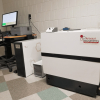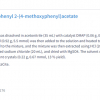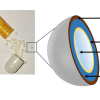Philippa L. Ascough,a* Michael I. Bird,b Will Meredithc and Colin E. Snapec
aScottish Universities Environmental Research Centre, Rankine Avenue, Scottish Enterprise Technology Park, East Kilbride, G75 0QF, Scotland, UK. E-mail: [email protected]
bCollege of Science, Technology and Engineering and Centre for Tropical Environmental and Sustainability Science, James Cook University, Cairns, Queensland, 4870, Australia
cFaculty of Engineering, University of Nottingham, The Energy Technologies Building, Innovation Park, Jubilee Campus, Triumph Road, Nottingham NG7 2TU, UK
Introduction: the many faces of pyrogenic carbon in the environment
Pyrogenic carbon is produced from the incomplete combustion of any type of biomass. The combustion process can be natural, such as wild fires, or controlled by humans, such as fossil fuel burning or domestic fires for heat and cooking. These processes have a very long history on Earth, with wildfires present from at least 400 million years ago,1 and the use of fire possibly stretching back over almost the whole history of the human species.2 During fires, a proportion of biomass is usually pyrolysed (exposed to high temperatures in conditions of restricted oxygen), and converted to pyrogenic carbon, which we also know as char, charcoal or soot. This process dramatically raises the carbon content of the material, and usually produces a highly polyaromatic structure, which is much more resistant to environmental degradation than the uncharred biomass. In recent years there has been a massive growth in interest surrounding how pyrogenic carbon behaves in the environment, as we have realised it can have some powerful negative effects. For example, we now know that pyrogenic carbon in the atmosphere is second only to CO2 in terms of inducing global warming,3 and is a key factor in the retreat of Himalayan glaciers and Arctic sea ice though albedo feedbacks.4,5 Further, there are implications for global public health surrounding pyrogenic carbon emissions, which result in thousands of premature deaths through lowered air quality.
On the other hand, pyrogenic carbon is extremely useful for studies in archaeology and environmental science, as its aromatic structure means it remains in the environment for very long periods of time. As a result, it is one of the most common materials submitted for radiocarbon dating, and provides invaluable information on the activities of past societies and the chronology of past changes in environment. There is also intense interest in the possibility of using charcoal as a climate change mitigation tool; the idea underlying this is that carbon is “locked up” for millennia when biomass is converted to charcoal, also known in this context as “biochar”, which is then buried in soils.6 Despite this interest, however, we still know little about how pyrogenic carbon behaves in the environment, crucially, whether it forms a global sink of carbon and over how long this sink is stable. To address this knowledge gap, we need to know how much pyrogenic carbon exists in different global carbon reservoirs and how rapidly it degrades, which is largely a function of its chemical structure. Because we presently have no definite answers to these questions, pyrogenic carbon could form a “missing” link in the global carbon cycle, explaining discrepancies in current carbon cycle models.7 One reason these questions remain open is that pyrogenic carbon is a difficult substance to isolate and study. There is a lack of consensus on what pyrogenic carbon actually is, and definitions cover a range of physical and chemical characteristics, as illustrated in the continuum of properties shown in Figure 1.

Figure 1. The “pyrogenic carbon continuum” showing variability in physical and chemical characteristics of biomass that has been altered by fire. Note that the term “pyrogenic carbon” itself refers to a continuum of characteristics and not a single type of material. Reprinted from Reference 8 with permission from Elsevier.
As a result, a range of analytical methods have been applied to try and extract pyrogenic carbon from environmental samples in order to better characterise it. A problem with many of these methods is that the pyrogenic carbon each technique isolates is operationally defined, and most techniques can result in a range of possible positive and negative artefacts. These problems result in variations of several orders of magnitude when a single method is applied to the same samples in different laboratories,9 and lead to large uncertainties over the actual amount of pyrogenic carbon in different carbon reservoirs; for example, uncertainty associated with published estimates of atmospheric black carbon (the most resistant fraction of pyrogenic carbon) is a factor of two to five on regional scales and at least ±50% on global scales.10 A serious problem is the lack of understanding over BC (black carbon) degradation pathways and turnover times in soils and sediments. While previous estimates of pyrogenic carbon indicated its extreme stability, leading to environmental half-lives of ~3000 years,11 suspicions of decadal or even annual pyrogenic carbon degradation12 are supported by new data showing degradation of charcoal over 67 days.13 There is therefore an urgent need to better characterise pyrogenic carbon, and understand its role in the global carbon cycle.
Novel methods to investigate pyrogenic carbon’s molecular form
We have been using a new method to isolate a chemically well-defined pyrogenic carbon fraction from a range of environmental materials (e.g. soils, dissolved organic carbon from rivers and aerosols). The method uses high-pressure hydrogen to reductively remove non-pyrogenic carbon from a sample, and is known as hydropyrolysis (HyPy). This technique isolates the pyrogenic carbon in a sample, which can then be quantified and characterised in more detail. In addition, the non-pyrogenic carbon fraction is trapped and can itself be investigated at the molecular level, for example by gas chromatography-mass spectrometry (GC-MS).14 During field trials HyPy has been used to track the fate of pyrogenic and non-pyrogenic carbon fractions in soils. HyPy is particularly sensitive to changes in these reservoirs and combining this with GC-MS analysis of extractable PAHs (polycyclic aromatic hydrocarbons) indicated that the latter decreased markedly with time over a two-year study. HyPy was applied to 12 reference materials from a pyrogenic carbon ring trial,9 comprising five environmental matrices (two soils, aerosol, dissolved organic material and marine sediment), three laboratory-produced materials (two charcoals and soot), and four “blank” materials (melanoidin, lignite, shale and coal).15 This was to assess whether our method could accurately and precisely give us the pyrogenic carbon content in all of these types of materials. The method performs well for all materials apart from the coal, where HyPy cannot discriminate between pyrogenic carbon and the polyaromatic structure of the coal itself (which is not produced by biomass burning), and tests revealed that HyPy is the only method whereby the composition of the BC measured can be defined, atomic H/C < 0.5 corresponding to seven rings and larger with the non-BC fraction comprising up to and including six rings. In further tests, HyPy was effectively able to “clean up” ancient charcoals (ca 30,000–50,000 years old) for radiocarbon dating.16 Here, spectroscopy is an invaluable tool to track the removal of contaminants, with 13C-solid state nuclear magnetic resonance (13C SS-NMR) particularly useful in this regard. Pyrogenic carbon gives a distinctive peak in 13C SS-NMR spectra, centred on 130 ppm,17 so it is possible to track the removal of contaminants such as cellulose, with its characteristic peaks between ca 20–105 ppm, see, for example, Figure 2.

Figure 2. 13C SS-NMR spectra of archaeological charcoals (raw charcoal is spectra 1) showing the incomplete removal of contaminants (e.g. cellulose) by acid-base treatment (spectra 2) and chemical oxidation (spectra 3), versus the complete removal of non-pyrogenic carbon by HyPy (spectra 4). (AZ: from the Faial Island, Azores; TSB: Toca do Serrote da Bastinia, Brazil). Reprinted from Reference 16 with permission.
Spectroscopy is also crucial in understanding the breakdown of pyrogenic carbon in the environment. Here, Fourier transform infrared (FT-IR) spectroscopy is very useful, providing information on the molecular structure of pyrogenic carbon itself, and on substances that can be extracted from this material after it has been exposed to environmental conditions (i.e. the products of degradation). The C=C bonds of pyrogenic carbon are very distinct in FT-IR spectra, and can be readily separated from spectral contributions from other materials in the sample. FT-IR spectroscopy has also revealed that the process of pyrogenic carbon degradation involves carboxylation of the aromatic structure, again producing a very distinct IR spectral response. The application of FT-IR to these questions, using archaeological sample material, has revealed that after an extended time in soils or sediments, a portion of pyrogenic carbon is likely to be transformed into substances that are mobile in the soil, and could be leached away from the pyrogenic carbon structure, potentially then entering a faster-cycling pool of the global carbon cycle.18
Another application that gives ultra-high resolution insights into pyrogenic carbon dynamics in the environment is radiocarbon dating. This method applies accelerator mass spectrometry (AMS) to count individual atoms of the radioactive isotope of carbon, 14C. Carbon-containing samples in the environment contain different levels of 14C depending on the time of precursor death or moment of final formation, meaning that AMS allows us to identify how long a sample of pyrogenic carbon has been in the environment, and how quickly it is turning over in the carbon cycle. AMS also allows us to discriminate between different sources of pyrogenic carbon in a sample, particularly one derived from fossil fuel burning versus biomass burning. This is helpful in understanding the sources of air pollution sources, for example, and is possible because biomass contains “modern” levels of 14C, whereas fossil fuels do not contain measureable levels of 14C, due to their great age.
These methods of chemically characterising pyrogenic carbon can be backed up with methods of physically characterising its structure. An exciting development in this regard is the application of X-ray microtomography, which is a 3D scan of the surface and interior of pyrogenic carbon particles (Figure 3).

Figure 3. X-Ray microtomographic images of ancient charcoal. Image C shows the pres-ence of mineral inclusions along micropores internal to the sample. Reprinted from Reference 19 with permission from Elsevier.
This allows us to understand the surface area and porosity of samples, together with identifying mineral material that has become trapped inside the sample, and which may play a role in degradation of pyrogenic carbon in the environment.
Dates and fates: understanding the global cycling of pyrogenic carbon
Current understanding of pyrogenic carbon’s role in the carbon cycle is evolving quickly, and reveals its importance as a form of carbon that has not yet effectively been incorporated into carbon cycle models. We now know that annual pyrogenic carbon production of 50–200 million tons per year20 releases 7.5–17 million tons of pyrogenic carbon to the atmosphere,21and contributes to storage of 54–109 billion tons pyrogenic carbon in soils.22 Inter-reservoir pyrogenic carbon fluxes are substantial, with an estimated transport of 19–80 million tons per year by rivers to the ocean21 and atmosphere-ocean transport of 7 million tons pyrogenic carbon per year, respectively.22 One concern is that climate change and human activity are currently playing a role in mobilising stocks of pyrogenic carbon that have been stored for periods of up to several thousand years. An example is enhanced melting of Arctic permafrost, which is a major repository of pyrogenic carbon as a result of boreal fires over millennia.23 In addition, historical destruction of Brazil’s Atlantic forest by humans since the time of the 15th–16th century explorer Christopher Columbus has generated massive stocks of pyrogenic carbon, that is being transported to the oceans at the rate of 50,000–70,000 tons each year.24 We simply do not know how much of this pyrogenic carbon is released to the atmosphere as CO2, versus that being stored in long-term sedimentary deposits, such as on the ocean floor.
Our work is starting to shed light on some of these questions, by monitoring the release of carbon from pyrogenic carbon in the environment. In the Daintree rainforest of Australia, we have observed loss of pyrogenic carbon on annual timescales, the rate of which appears linked to the chemistry of the soil in which the pyrogenic carbon is deposited. We have also observed the release of CO2 derived from charcoal during laboratory soil incubation experiments on the order of months. This loss of pyrogenic carbon is strongly linked to the activity of soil microbes, which appear capable of breaking down pyrogenic carbon in order to obtain energy. The conditions that pyrogenic carbon is produced under also appear to play a role in its environmental fate; for example, fungi most readily colonise the surface of pyrogenic carbon produced at lower temperatures.25
Summary
In summary, important questions remain surrounding the role of pyrogenic carbon in the global carbon cycle, and we are only just starting to address some of these questions. It seems as though the fate of pyrogenic carbon in the environment depends strongly upon, not only the specific chemistry of the material itself, but also the depositional environment in which it is emplaced. Spectroscopy is central to answering these questions, predominantly in the form of 13C-SS-NMR and FT-IR, although it is the integration of several methodologies that offers the most fruitful approach to understanding this missing link in the carbon cycle.
References
- I.J. Glasspool, D. Edwards and L. Axe, “Charcoal in the Silurian as evidence for the earliest wildfire”, Geology 32, 381–383 (2004). doi: http://dx.doi.org/10.1130/G20363.1
- R.W. Wrangham, J.H. Jones, G. Laden, D. Pilbeam and N. Conklin-Brittain, “The raw and the stolen: cooking and the ecology of human origins”, Curr. Anthropol. 40, 567–594 (1999). doi: http://dx.doi.org/10.1086/300083
- V. Ramanathan, M.V. Ramana, G. Roberts, D. Kim, C. Corrigan, C. Chung and D. Winker, “Warming trends in Asia amplified by brown cloud solar absorption”, Nature 448, 575–578 (2007). doi: http://dx.doi.org/10.1038/nature06019
- M.M. Holland, C.M. Bitz and B. Tremblay, “Future abrupt reductions in the summer Arctic sea ice”, Geophys. Res. Lett. 33, L23503 (2006). doi: http://dx.doi.org/10.1029/2006GL028024
- M.G. Flanner, C.S. Zender, J.T. Randerson and P.J. Rasch, “Present-day climate forcing and response from black carbon in snow”, J. Geophys. Res. 112, D11202 (2007). doi: http://dx.doi.org/10.1029/2006JD008003
- J. Lehmann, J. Gaunt and M. Rondon, “Bio-char sequestration in terrestrial ecosystems—a review”, Mit. Adapt. Strat. Global Change 11, 395–419 (2006). doi: http://dx.doi.org/10.1007/s11027-005-9006-5
- E.R.M. Druffell, “Comments on the importance of black carbon in the global carbon cycle”, Marine Chem. 92, 197–200 (2004). doi: http://dx.doi.org/10.1016/j.marchem.2004.06.026
- M.I. Bird and P.L. Ascough, “Isotopes in pyrogenic carbon: a review”, Org. Geochem. 42, 1529–1539 (2012). doi: http://dx.doi.org/10.1016/j.orggeochem.2010.09.005
- K. Hammes, M.W.I. Schmidt, R.J. Smernik, L.A. Currie, W.P. Ball, T.H. Nguyen, P. Louchouarn, S. Houel, O. Gustafsson, M. Elmquist, G. Cornelissen, J.O. Skjemstad, C.A. Masiello, J. Song, P. Peng, S. Mitra, J.C. Dunn, P.G. Hatcher, W.C. Hockaday, D.M. Smith, C. Hartkopf-Froder, M. Axel Bohmer, B. Luer, B.J. Huebert, G.W. Amelung, S. Brodowski, L. Huang, W. Zhang, P.M. Gschwend, G. Flores-Cervantes, C. Largeau, J.N. Rouzaud, C. Rumpel, G. Guggenberger, K. Kaiser, A. Rodionov, F.J. Gonzalez-Vila, J.A. Gonzalez-Perez, J.M. De La Rosa, D.A.C. Manning, l.E. Lopez-Cape and L. Ding, “Comparison of quantification methods to measure fire-derived (black/elemental) carbon in soils and sediments using reference materials from soil, water, sediment and the atmosphere”, Global Biogeochem. Cy. 21, GB3016 (2007). doi: http://dx.doi.org/10.1029/2006GB002914
- V. Ramanathan and G. Carmichael, “Global and regional climate changes due to black carbon”, Nat. Geosci. 1, 221–227 (2008). doi: http://dx.doi.org/10.1038/ngeo156
- C.M. Preston and M.W.I. Schmidt, “Black (pyrogenic) carbon: a synthesis of current knowledge and uncertainties with special consideration of boreal regions”, Biogeosciences 3, 397–420 (2006). doi: http://dx.doi.org/10.5194/bg-3-397-2006
- M.I. Bird, C. Moyo, E.M. Veenendaal, J. Lloyd and P. Frost, “Stability of elemental carbon in a savanna soil”, Global Biogeochem. Cy. 13, 923–932 (1999). doi: http://dx.doi.org/10.1029/1999GB900067
- M. Zimmermann, M.I. Bird, C. Wurster, G. Saiz, I. Goodrick, J. Barta, P. Capek, H. Santruckova and R. Smernik, “Rapid degradation of pyrogenic carbon”, Global Change Biol. 18, 3306–3316 (2012). doi: http://dx.doi.org/10.1111/j.1365-2486.2012.02796.x
- A. Rombolà, W. Meredith, C.E. Snape, S. Baronti, L. Genesio, F. Primo Vaccari, F. Miglietta and D. Fabbri, “Fate of soil organic carbon and polycyclic aromatic hydrocarbons in a vineyard soil treated with biochar”, Environ. Sci. Technol. 49, 11037–11044 (2015). doi: http://dx.doi.org/10.1021/acs.est.5b02562
- W. Meredith, P.L. Ascough, M.I. Bird, D.J. Large, C.E. Snape, Y. Sun and E.L. Tilston, “Assessment of hydropyrolysis as a method for the quantification of black carbon using standard reference materials”, Geochim. Cosmochim. Acta 97, 131–147 (2012). doi: http://dx.doi.org/10.1016/j.gca.2012.08.037
- P.L. Ascough, M.I. Bird, W. Meredith, R.E. Wood, C.E. Snape, F. Brock, T.F.G. Higham, D.J. Large and D.C. Apperley, “Hydropyrolysis: implications for radiocarbon pre-treatment and characterization of black carbon”, Radiocarbon 52, 1336–1350 (2010).
- P. Ascough, M.I. Bird, P. Wormald, C.E. Snape and D. Apperley, “Influence of pyrolysis variables and starting material on charcoal stable isotopic and molecular characteristics”, Geochim. Cosmochim. Acta 72, 6090–6102 (2008). doi: http://dx.doi.org/10.1016/j.gca.2008.10.009
- P.L. Ascough, M.I. Bird, S.M. Francis and T. Lebl, “Alkali extraction of archaeological and geological charcoal: Evidence for diagenetic degradation and formation of humic acids”, J. Archaeol. Sci. 38, 69–78 (2011). doi: http://dx.doi.org/10.1016/j.jas.2010.08.011
- M.I. Bird, P.L. Ascough, I.M. Young and C.V. Wood, “X-ray microtomographic imaging of charcoal”, J. Archaeol. Sci. 35, 2698–2706 (2008). doi: http://dx.doi.org/10.1016/j.jas.2008.04.018
- T.A.J. Kuhlbusch and P.J. Crutzen, “Toward a global estimate of black carbon in residues of vegetation fires representing a sink of atmospheric CO2 and a source of O2”, Global Biogeochem. Cy. 9, 491–501 (1995). doi: http://dx.doi.org/10.1029/95GB02742
- M.I. Bird, J.G. Wynn, G. Saiz, C.M. Wurster and A. McBeath, “The pyrogenic carbon cycle”, Ann. Rev. Earth Plan. Sci. 43, 273–298 (2015). doi: http://dx.doi.org/10.1146/annurev-earth-060614-105038
- D.O. Suman, T.A.J. Kuhlbusch and B. Lim, “Marine sediments: a reservoir for black carbon and their use as spatial and temporal records of combustion”, in NATO ASI Series I: Global Environmental Change, Ed by J.S. Clark, H. Cachier, J.G. Goldammer and B. Stocks. Springer, Berlin, Heidelberg, New York, pp. 271–293 (1997). doi: http://dx.doi.org/10.1007/978-3-642-59171-6_12
- G. Guggenberger, A. Rodionov, O. Shibistova, M. Grabe, O.A. Kasansky, H. Fuchs, N. Mikheyeva, G. Zrazhevskaya and H. Flessa, “Storage and mobility of black carbon in permafrost soils of the forest tundra ecotone in Northern Siberia”, Global Change Biol. 14, 1367–1381 (2008). doi: http://dx.doi.org/10.1111/j.1365-2486.2008.01568.x
- T. Dittmar, C.E. de Rezende, M. Manecki, J. Niggemann, A.R. Coelho Ovalle, A. Stubbins and M. Correa Bernardes, “Continuous flux of dissolved black carbon from a vanished tropical forest biome”, Nat. Geosci. 5, 618–622 (2012). doi: http://dx.doi.org/10.1038/ngeo1541
- P. Ascough, C.J. Sturrock and M.I. Bird, “Investigation of growth responses in saprophytic fungi to charred biomass”, Isot. Environ. Health Stud. 46, 64–77 (2010). doi: http://dx.doi. org/10.1080/10256010903388436



















